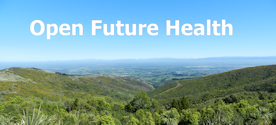

Preface to Part One
Auto-Play is OFF.
We suggest that you read first.
List of the pages in Part one
Humans Have Always Used Our Lipid Metabolism and Our Glucose Metabolism.
The human body is adapted to uncertainty of food supply. Historically, food shortage was common and people were often in ketosis. Since the 1920's it's often been thought of as "Starvation Ketosis." So people have avoided it's study, except for treating epilepsy, and in the "special case" of breast feeding babies.
But, ketosis is easily induced on a very low carbohydrate diet, there is no starvation, in fact no hunger at all. That's what we have to learn about. Once you have that new knowledge you need to decide, if for yourself this is a tool to use now, a tool to use sometimes, a tool to use all the time, or perhaps you'll choose not to use it after all.
We eat every day. Too many of us buy the cheapest food available. Carbohydrates, potatoes, bread, pasta and rice, and we suffer because of that. Social or cultural barriers, prevent us from seeing the nutritional science demonstrated in the diets of nomadic or hunter gathering peoples. We just assume that our diet is "better." When we choose not to listen to people who would tell us that "our dietary practices" are not healthy, we trap ourselves in a tradition that's causing us to be sick for years, and to die early. We claim to be eating an "evidence based" diet, but we choose to ignore much of the evidence we have.
Skip to Other Parts
Part One: (This Page) An introduction.
Part Two: Finding a Heart Healthy Diet
Part Three:The Standard American Diet and it's Effects.
Part Four: Lipophobia and the Sugar Debate
Part Five: Nutritional Ketosis is Normal
Part Six: The Obesidemic Environment and Commercial Influence
Part Seven: Professionals Oppose the Paradigm
Part Eight: Sources of Expertise and Some Suggestions